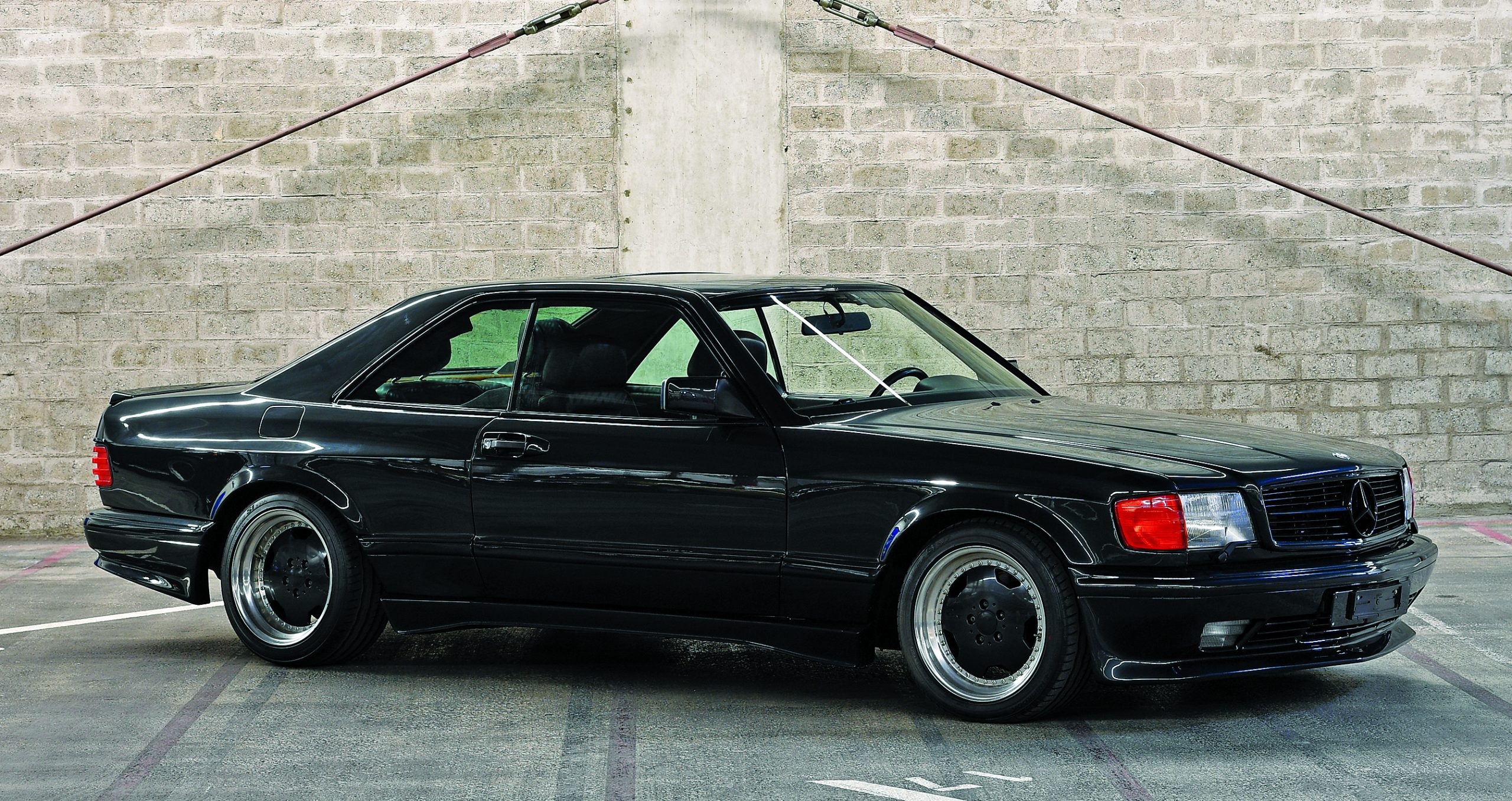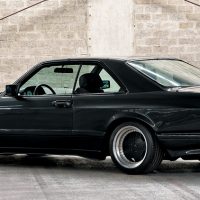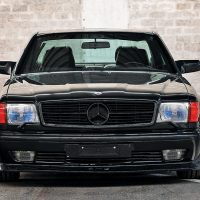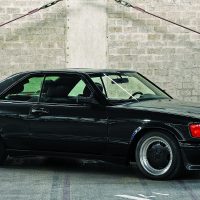SCM Analysis
Detailing
| Vehicle: | 1989 Mercedes-Benz 560SEC AMG 6.0 Wide Body |
| Years Produced: | 1986–91 (AMG conversions occurred after production ended) |
| Number Produced: | 28,929 560SEC cars were built. The number of AMG Wide Body versions is unknown but is likely under 500. It is thought that about 300 AMG 4-cam engines were built. |
| Original List Price: | $82,800 |
| SCM Valuation: | $338,972 (this car) |
| Tune Up Cost: | $540 |
| Distributor Caps: | $366, genuine Mercedes |
| Chassis Number Location: | Center of firewall behind ABS controller |
| Engine Number Location: | Behind left cylinder head on bellhousing on upwards-facing pad |
| Club Info: | Mercedes Benz Club of America |
| Website: | http://www.MBCA.org |
| Alternatives: | 1983–89 BMW M6/M635 CSi, 1975–89 Porsche 930, 1987–89 Aston Martin V8 Vantage Volante |
| Investment Grade: | B |
This car, Lot 122, sold for $338,972, including buyer’s premium, on February 6, 2019, in Paris, FRA, as part of RM Sotheby’s Youngtimer Collection.
This sale smashed the auction record for pre-merger AMGs. This signals a change in the market. Apex pre-merger AMG-Mercedes are no longer niche collectibles. They are now serious automotive assets.
But this result also leaves us with more questions than answers.
Is an AMG really an AMG if it was assembled outside of Affalterbach, Germany? And how are we to care for an engine that was fitted with fragile prototype twin-cam cylinder heads? Most importantly, why did the price of C126s with wide bodies and AMG 4-cam engines jump from below $50,000 to six-digit values?
AMG workshops around the world
If you wanted an AMG before the merger with Daimler, you had to go to an AMG tuner. Before 1987, when it was easy to import cars into the United States from Europe, Americans wanting an AMG could simply go to Germany, purchase a Mercedes they liked, take it to an AMG workshop and have it modified according to their wishes.
After 1987, they would import it using the one-time EPA exemption.
However, as AMG’s fame grew, satellite shops with a close relationship to AMG began to pop up in the United States (AMG of North America, owned by Richard Buxbaum); Canada (Flying Tiger, started by Eddy and Ricky Lai in 1980) and Japan. There were also multiple installers of AMG products in Europe, meaning that just because the work was done there doesn’t mean it was done in Affalterbach.
So does an AMG built at a satellite shop carry the same value as an authentic German Affalterbach product? The market — in the case of our subject car — has spoken, and it seems that it makes no difference.
A fast, complex, ticking time bomb
My friend Jonathan Hodgeman, who has worked on more of these 4-cam AMG engines than anyone I know, has described them with great affection — and great frustration. Much of the information below has been shared with me via our regular conversations.
Stories of oil-supply passages seeping oil, heads so porous that coolant can ooze through areas where it shouldn’t, and valve adjustments that take a week to complete are just some of the complications encountered when dealing with an engine that was always “in Entwicklung” — under development.
The whole thing started when AMG took a stock Mercedes 5-liter M117 V8 and decided it needed more power. Punching the engine out to 5.4 liters helped, but the engines also needed improved respiration. So AMG created a twin-cam, 4-valve, three-piece cylinder head and fitted it to the M117 block.
The intake manifold and K-Jetronic fuel injection were retained, as was the stock timing chain. The second cam was driven off of an additional gear in the head. The valves were now actuated by shim-over-bucket tappet — and the new heads were sand cast.
Head-gasket failure, coolant leakage and oil hemorrhages are all too common with these heads. To ice the cake, short blocks were usually bored out and compression ratios raised. The final product — a 6-liter engine with roughly 10.5 atmospheres of compression — generated close to 400 horsepower.
All this work made the final version — such as our subject car — a very fast ticking time bomb. The main casualty will eventually be the new owner’s checkbook.
The power these pigs make is incredible, but the lofty price paid for this specific 560SEC does not exempt it from any of the aforementioned worst-case scenarios.
Desirable parts make desirable cars
A fully documented wide-body SEC with the 4-cam engine could have been bought at $50,000 or so as early as five years ago.
How did we end up at $300,000 in such a short time?
I have long stated that a Mercedes-Benz of this era is much more than the sum of its parts — but this is not the case with pre-merger AMGs.
The parts I am referring to mainly include the 4-cam engine and the Wide Body kit, but the interior, wheels and suspension modifications also play a role. Considering our subject car was a plain 560SEC that had all of these items added to it in Japan, the extra parts really do make the car.
A car with the Wide Body kit — but with a stock interior, engine and suspension — recently sold in a private sale for $100k. Flying Tiger built it as a show car, and it had very low mileage.
Identifying which price point one of these cars will bring is unpredictable, but the combination of the Wide Body kit and 4-cam engine defined our subject car’s value.
The litter of Wide Body piglets that RM Sotheby’s is bringing to market through the Youngtimer Collection — more will cross the block in Fort Lauderdale, Essen and Amelia Island — will shake things up for a while.
No one knows where this market will end up. It may take years for the dust to settle.
No one knows how many of these cars were built — and no one ever will. AMG has never released a statement about how many 4-cam engines or Wide Body kits were constructed.
You have to take the car at face value, which is likely what happened in Paris.
This 560SEC AMG was well sold, but the future for the Ur-AMG looks promising. ♦
(Introductory description courtesy of RM Sotheby’s.)





